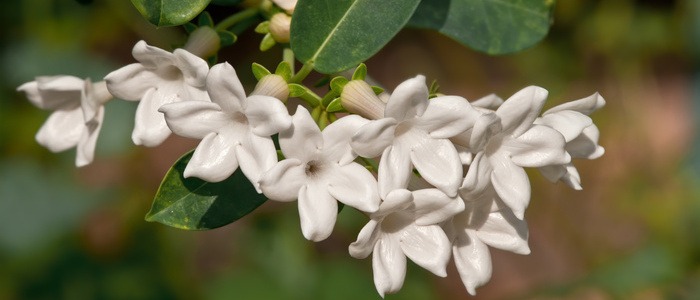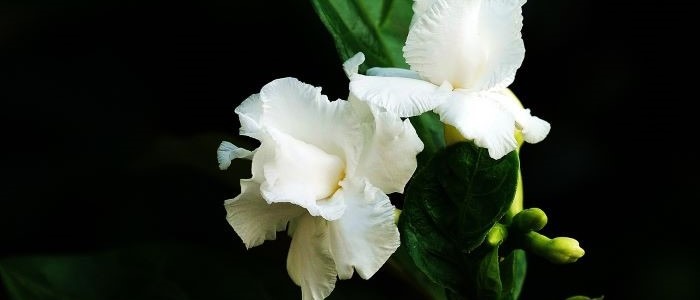The white Christmas cactus plant is a beautiful and popular plant that can bring joy and festive cheer to your home during the winter season. Commonly known as Thanksgiving or Easter cactus, this plant offers vibrant blooms in shades of pink, purple, red, orange, and white from late autumn through early spring.
Despite its seasonal beauty, the Christmas cactus does require some special care. To ensure you get the most out of your plant and it blooms brightly for many years to come, read on for our guide to caring for the Christmas cactus.

White Christmas Cactus Frequently Asked Questions
Is the white Christmas cactus plant poisonous?
No, the white Christmas cactus is not poisonous to humans or pets. However, to prevent any potential mishaps, it is always a good idea to keep plants out of reach of children and pets to avoid any potential accidents. As a matter of fact, the Christmas cactus is often used during the holiday season as a decorative plant due to its beautiful blooms and non-toxic nature. The white Christmas cactus can be a stunning addition to any indoor garden or holiday display.
How do you get the Christmas cactus plant to bloom?
To get the Christmas cactus plant to bloom, it needs a period of darkness for about 12-14 hours per day for several weeks. This can be achieved by placing the plant in a dark room or covering it with a cloth or paper bag. Additionally, the plant should be kept in a cool room with temperatures around 50-60°F during this period. Once the buds start to form, the plant can be moved back to its usual location with bright, indirect sunlight and regular watering.
How to care for the white Christmas cactus plant
The white Christmas cactus, also known as the Thanksgiving cactus, is a great option for those who love to have greenery in their home. Not only does this beautiful plant add a touch of nature and life to any room, but it’s also relatively low-maintenance. Here are some tips on how to care for your white Christmas cactus and ensure it keeps blooming all season long!
When you first bring home your white Christmas cactus, be sure to place it in a spot that will get plenty of indirect sunlight. This means avoiding direct sunlight during the day as well as any drafty areas or extreme temperatures. Keep the soil moist but not too wet; a good rule of thumb is to water it when the top layer of the soil feels dry. Make sure to fertilize your cactus regularly, once every two weeks during the growing season and once per month while dormant.
The best time for blooms is around November or December (which is why this plant is also called the Thanksgiving cactus). To ensure your white Christmas cactus is blooming just in time for the holidays, decrease water and fertilizer during the summer months. This will help to slow down its growth and encourage more buds come fall.
With just a little bit of TLC, you’ll be sure to have a beautiful white Christmas cactus that will last for many holiday seasons.
Easy Ways to Propagate the White Christmas Cactus Plant
If you have a white Christmas cactus plant (Schlumbergera truncata) in your home, you may want to learn how to propagate it so that you can share the beauty of this unique plant with family and friends. Propagating this type of cactus is actually quite simple – all you need is some sharp scissors and a bit of patience!
To begin, you’ll need to locate a healthy stem on the original cactus. Make sure the stem has at least two or three joints before snipping it off – this will give the new plant enough nutrients to thrive. Once you’ve cut the stem from the parent plant, remove any lower leaves and place it in a shallow dish of water. Make sure the stem is completely submerged, and wait for it to take root in a pot of moist, well-draining cactus soil.
You can also propagate your white Christmas cactus from seed. To do this, gather the seeds from a mature plant and sow them in a shallow tray filled with seed starting mix. Cover lightly with plastic wrap and keep the tray at room temperature until germination occurs (usually within two weeks). Once the seedlings become established, you can transfer them to individual pots.
No matter which propagation method you choose, be sure to keep your new plant in a bright spot and water it regularly. With patience and a bit of TLC, your white Christmas cactus should be blooming with beautiful white flowers in no time!
Pruning the White Christmas Cactus Plant
One of the most beautiful and rewarding houseplants you can have is a white Christmas cactus. Not only does this plant bring life to any home with its colorful, exotic blooms, but it’s also relatively low maintenance! With just a bit of pruning and care, your white Christmas cactus will thrive for years to come.
Here are a few tips for pruning your white Christmas cactus:
1. When to Prune. The best time to prune your white Christmas cactus is in the spring, around April or May. This will ensure that any new growth you encourage won’t be stunted by colder temperatures later in the year.
2. Where to Prune. When pruning, you should focus your attention on the ends of the spines and branches. You want to snip off any dead or damaged growth in order to promote new growth. Make sure you’re only cutting away healthy sections of the branch and not taking too much away from the cactus.
3. How to Prune. When it comes to actually pruning the cactus, you’ll want to use a pair of sharp, clean scissors or shears. Make sure that they’re sterilized before and after use in order to avoid spreading diseases between plants.
4. What Not to Prune. You should avoid pruning any buds or flower stalks, as these are essential for the cactus’s growth and reproduction. It can also be difficult to tell if a bud is healthy or not, so it’s best to leave them alone unless you’re absolutely sure they need to go.
By following these simple pruning tips for your white Christmas cactus, you’ll be sure to have a healthy and thriving plant in no time! With just a bit of care and attention, you can keep your white Christmas cactus blooming all year long.
Problems with the White Christmas Cactus Plant
If you are looking for a festive, seasonal houseplant, the beautiful white Christmas cactus may be just what you’re after. But beware – this plant can come with some unexpected surprises!
The white Christmas cactus is a species of Schlumbergera, which are more difficult to care for than other types of cacti. They need much more attention and regular care than other popular plants, such as succulents.
White Christmas cacti require a certain amount of direct sunlight to thrive, but too much sun can damage the plant. Too little light will cause them to become leggy and less vibrant in color. And if you move your white Christmas cactus too much, you can end up disrupting its blooming schedule.
Another issue with the white Christmas cactus is overwatering. This type of plant doesn’t like to be soggy and needs only a moderate amount of water – not too little and not too much. As it’s a desert plant, it’s best to let the top 2 inches of soil dry before watering.
Finally, white Christmas cacti can struggle with pests and fungal diseases if not taken care of correctly. To prevent this from happening, make sure you don’t over-fertilize the plant and that you give enough water and light for the plant to thrive.
If you are willing to put in the extra effort, then the white Christmas cactus can make a beautiful and festive addition to any home. With the right balance of light, water and care, your white Christmas cactus will be blooming just in time for the holidays!
Conclusion
In conclusion, the White Christmas Cactus Plant is a beautiful and easy-to-care-for addition to any home. With just a few simple tips and tricks, you can keep your plant looking lush and healthy all year round. Watering on a regular basis (every two or three weeks is ideal), providing adequate sunlight, pruning and fertilizing as needed, and repotting once a year are all important steps for success. With proper care, your White Christmas Cactus Plant will bring you joy for many years to come! Happy gardening!
Other Houseplants With White Flowers








